Steel wool’s effectiveness against foundation mice comes from its razor-sharp metal fibers that create painful irritation when mice attempt to chew through it. The abrasive texture and microscopic edges trigger their survival instincts, while the compressed steel threads form an impenetrable barrier in cracks and gaps. Unlike softer materials, steel wool’s durability withstands significant pressure for up to twelve months. Understanding proper installation techniques and material grades will maximize your foundation’s long-term protection against rodent invasions.
Understanding Foundation Mouse Entry Points

When you’re dealing with a mouse problem, understanding how these persistent rodents enter your home is essential for effective prevention. Foundation mice can squeeze through openings as small as six to seven millimeters—just over one-fourth of an inch. This means you’ll need to seal small openings that might seem insignificant to you but offer easy access for mice.
Common mouse entry points include gaps around utility lines, pipes, and vents penetrating your foundation. Cracks and gaps in foundation walls themselves create perfect pathways. Areas under doors without proper weatherstripping also invite mice indoors.
Inspect your foundation regularly for gnawing or rubbing marks that indicate mouse entry activity. Identifying these signs early prevents small problems from becoming larger infestations requiring extensive intervention.
Why Mice Target Home Foundations
Your home’s foundation attracts mice because it’s riddled with cracks and gaps that create perfect entry points into your living space.
These same openings offer mice immediate shelter from harsh weather conditions like rain, snow, and extreme temperatures.
Foundation walls fundamentally become a mouse highway system that provides both protection and easy access to the warmth and resources inside your home.
Foundation Cracks Provide Access
Although your home’s foundation appears solid, mice can squeeze through cracks as small as six to seven millimeters—any opening that fits a pencil becomes their personal doorway.
These foundation cracks develop around utility lines, pipes, and settling areas, creating perfect entry points that mice exploit relentlessly.
Your foundation’s dark, sheltered spaces attract rodents seeking ideal nesting environments. They’ll discover every weakness in your structure, turning minor gaps into major infestations.
That’s why you must seal holes immediately when you spot them.
Regular foundation inspections become critical for preventing rodent invasions. Even hairline cracks can expand, giving mice easier access over time.
Steel wool offers an effective solution because mice can’t chew through its tough metal fibers, making it superior to other materials.
Shelter From Weather Elements
Foundation gaps aren’t just convenient entry points—they’re gateways to prime real estate that mice desperately need for survival.
Your home’s foundation offers mice the ultimate weather refuge, protecting them from freezing temperatures, scorching heat, and driving rain. These small gaps and cracks and crevices become lifesaving shelters when outdoor conditions turn deadly.
Mice target foundations because they provide consistent environmental protection that’s essential for their survival:
- Temperature extremes can kill within hours – your foundation’s stable environment literally saves their lives
- Rain and snow force desperate shelter-seeking – they’ll die from exposure without immediate refuge
- Predators hunt relentlessly outdoors – foundations offer safety from owls, snakes, and cats
- Winter survival depends on warm nesting sites – cold foundations still beat freezing outdoors
Effective pest control means understanding this survival drive.
Steel Wool’s Physical Properties Against Rodents
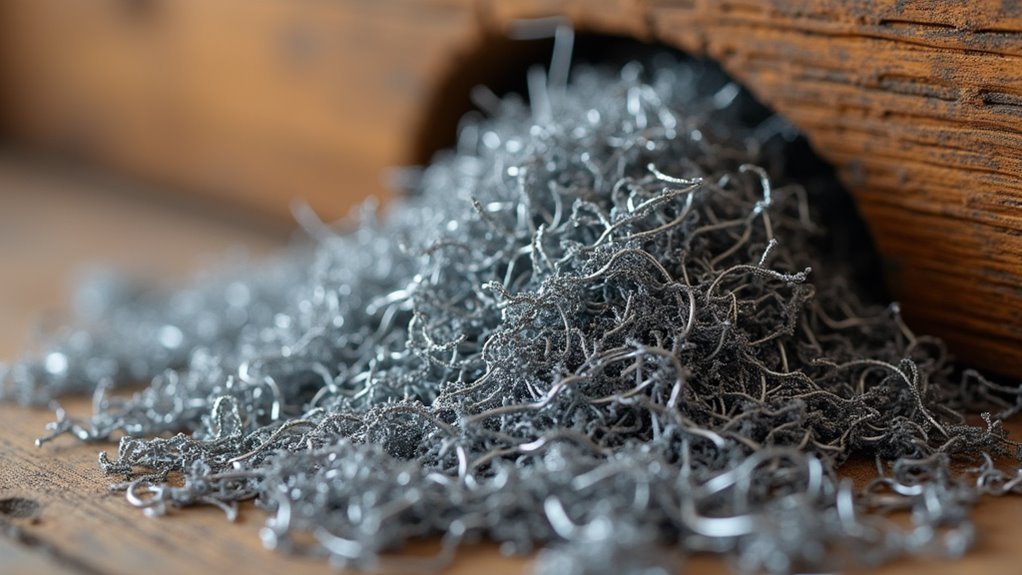
When mice encounter steel wool blocking their potential entry points, they face a formidable barrier that exploits their physical limitations. The material’s abrasive texture creates an uncomfortable chewing experience that deters rodents from gnawing through it. You can effectively use steel wool to keep mice out because its sharp edges irritate their mouths and gums, making continued attempts painful and discouraging.
The fine, flexible steel threads compress tightly into small cracks and holes, eliminating potential entry points that mice typically exploit. Unlike softer materials that mice easily destroy, steel wool withstands significant pressure without breaking apart.
This durability guarantees your barrier remains intact for up to twelve months, providing continuous protection against mouse invasion while maintaining its structural integrity throughout various weather conditions.
How Steel Wool Irritates Mouse Mouths and Gums
Because steel wool’s microscopic metal fibers create thousands of tiny razor-like edges, mice experience immediate discomfort when they attempt to bite or chew through this barrier material.
The abrasive texture causes physical harm to their delicate mouth tissues, making each gnawing attempt increasingly painful. This discomfort triggers their natural survival instincts, causing them to avoid the area entirely.
Steel wool’s effectiveness stems from how it targets their most vulnerable areas:
- Sharp metal fibers pierce and irritate sensitive gum tissue
- Razor-like edges cut into their tongues during chewing attempts
- Abrasive texture causes bleeding and swelling in mouth cavities
- Persistent pain creates lasting psychological trauma around entry points
Unlike softer materials they’ll persistently attack, steel wool serves as an unrelenting deterrent that mice simply can’t overcome comfortably.
Choosing the Right Grade of Steel Wool for Foundation Work
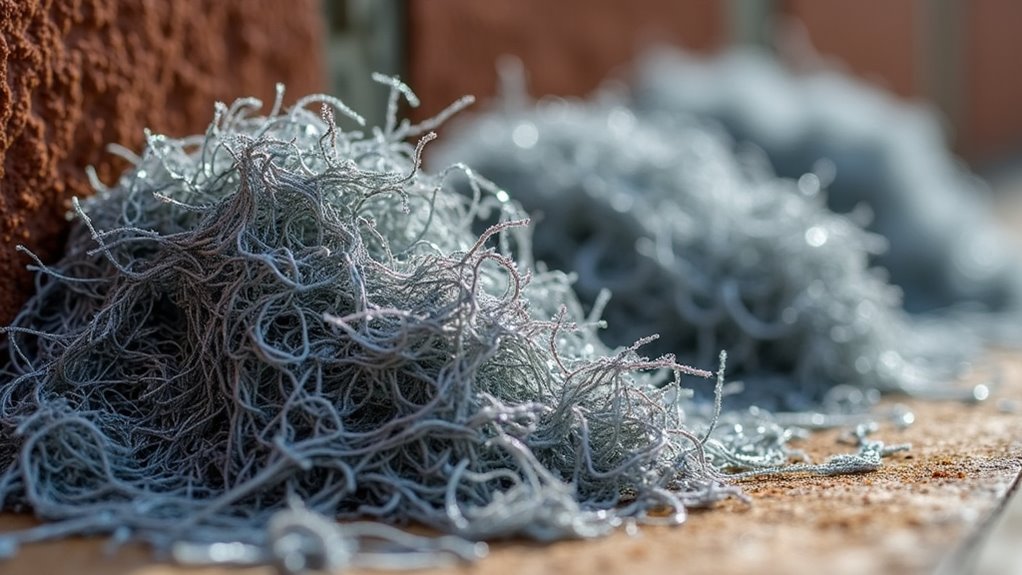
While all steel wool grades create an uncomfortable barrier for mice, selecting coarse or extra-coarse grades (#3 or #4) gives you the most effective foundation protection. These coarse grades of steel wool provide superior strength that’s harder for rodents to chew through compared to finer options.
| Grade | Texture | Foundation Use | Durability | Gap Size |
|---|---|---|---|---|
| #0000 | Extra Fine | Not Recommended | Low | Any |
| #00 | Fine | Poor Choice | Low | Small |
| #0 | Medium | Limited Use | Medium | Medium |
| #3 | Coarse | Excellent | High | Large |
| #4 | Extra Coarse | Best Option | Highest | Any |
When sealing entry points around your foundation, cut medium or coarse steel wool to fit snugly in gaps larger than one-quarter inch. This effective material works best when combined with caulk for maximum protection.
Locating Common Foundation Gaps and Cracks
You’ll need to systematically examine your foundation’s most vulnerable areas where mice typically enter your home.
Start by checking where utilities and pipes penetrate the foundation wall, as these spots commonly develop gaps measuring just six to seven millimeters—enough space for a mouse to squeeze through.
Focus your inspection on concrete joints, door thresholds, window frames, and seasonal cracks that expand and contract with temperature changes.
Foundation Wall Inspection Points
When inspecting your foundation for potential mouse entry points, focus on identifying gaps or cracks larger than one-quarter inch, as these openings provide easy access for rodents.
You’ll need to examine the foundation’s surface thoroughly for visible wear or damage caused by settling and moisture exposure over time.
Pay special attention to areas around utilities and pipes, where unsealed spaces commonly develop.
Don’t forget to inspect your attic and basement, as these areas often contain hidden gaps that aren’t immediately visible during quick inspections.
- Discovering a family of mice has already invaded your warm, safe home
- Finding expensive damage to insulation, wiring, and stored belongings
- Dealing with health risks from droppings contaminating your living spaces
- Losing sleep over scratching sounds echoing through your walls at night
Regular maintenance and prompt sealing holes prevents these costly problems.
Utility Penetration Vulnerabilities
Since utility lines must penetrate your foundation to bring electricity, water, and gas into your home, contractors often create openings that exceed the actual size needed for pipes and wires. These utility penetration vulnerabilities create perfect entry points for mice, who can squeeze through gaps as small as six to seven millimeters wide.
| Vulnerability Type | Common Size | Sealing Priority |
|---|---|---|
| Pipe penetrations | 6-25mm gaps | High |
| Wire entry points | 3-15mm cracks | High |
| Door thresholds | 5-20mm spaces | Medium |
You’ll find these openings where utility lines enter your foundation walls. Don’t overlook gaps under doors and around windows, as these provide additional access routes. Focus your inspection on areas where deterioration has widened original openings. Sealing entry points larger than one-quarter inch requires immediate attention.
Seasonal Crack Development
Beyond these utility-related gaps, seasonal weather patterns create additional foundation vulnerabilities that require your attention.
Temperature fluctuations cause your foundation to expand and contract, creating cracks that mice exploit for entry. Moisture makes seasonal crack development worse when water seeps into small fissures and freezes, expanding the damage.
You’ll find these seasonal cracks developing at wall bases, around windows, and near existing utility penetrations. Regular inspections during seasonal changes help you spot new vulnerabilities before they become serious problems.
- Your family’s safety depends on sealing gaps before mice establish nests
- One-quarter inch openings welcome entire mouse colonies into your home
- Unsealed cracks become highways for disease-carrying rodents
- Steel wool creates an impenetrable barrier that prevents mouse infestation
Proper Steel Wool Installation Techniques
Three critical steps guarantee your steel wool installation creates an impenetrable barrier against mice.
First, cut medium or coarse-grade steel wool into pieces that snugly fit each small hole you’ve identified. You’ll need to firmly stuff the material into any opening larger than one-quarter inch, using screwdrivers for deeper or awkward spaces to achieve maximum security.
Cut medium or coarse-grade steel wool into snug-fitting pieces for each hole, stuffing firmly into any opening larger than one-quarter inch.
Second, seal the edges with weatherproof caulk after inserting the steel wool. This reinforces your barrier and prevents moisture damage that could compromise durability.
Third, pack the steel wool tightly to eliminate loose areas mice could exploit.
These proper steel wool installation techniques require regular inspection and replacement when necessary to keep rodents from finding entry points into your foundation.
Combining Steel Wool With Caulking for Maximum Protection
While steel wool alone creates a formidable barrier, you’ll achieve superior mouse protection by combining it with high-quality caulking. This powerful combination creates a durable seal that effectively blocks entry points, as the caulk holds steel wool in place and prevents rodents from pulling it out.
The steel wool’s coarse texture makes it nearly impossible for mice to chew through, while caulking provides additional protection against moisture and pest intrusion.
For maximum effectiveness against persistent rodents:
- Seal their hopes of invasion with weatherproof caulk that withstands harsh outdoor conditions
- Crush their dreams of entry by filling larger holes with expanding foam first
- Destroy their escape routes with regular barrier inspections
- Eliminate their comeback potential through proper maintenance
Weather Resistance and Durability Factors
Although steel wool creates an effective barrier against mice, its long-term performance depends heavily on how well it withstands your local climate conditions.
Steel wool’s composition naturally provides weather resistance against various outdoor elements, making it suitable for foundation applications. The coarse texture resists moisture degradation better than fine materials, helping maintain structural integrity over time.
When properly installed, steel wool can last up to 12 months, though environmental factors like humidity and precipitation greatly impact its durability.
You’ll need to conduct regular inspections since moisture exposure can cause rust, compromising effectiveness.
The steel wool’s weather resistance makes it reliable for sealing foundation gaps, but monitoring guarantees continued protection against rodent entry.
Maintenance Schedule for Steel Wool Barriers
You’ll need to establish a consistent inspection routine to keep your steel wool barriers effective against foundation mice.
Check your installations every three months for signs of wear, rust, or gaps that could compromise protection.
Knowing when to replace deteriorating steel wool guarantees your rodent control system maintains its integrity over time.
Regular Inspection Timeline
Since mice can exploit even the smallest gaps in your defenses, establishing a consistent inspection schedule for your steel wool barriers becomes critical to maintaining their effectiveness.
Your regular inspection routine should occur every three months under normal conditions, but you’ll need to check for signs of deterioration more frequently during challenging weather periods.
After heavy rain or snow, inspect your barriers immediately since moisture accelerates rusting. Focus intensively on fall and winter inspections when desperate mice actively seek warm shelter.
- Document every inspection date – Missing even one check could mean discovering an invasion too late
- Replace deteriorated steel wool instantly – Compromised barriers invite costly infestations
- Monitor seasonal vulnerability periods – Cold months bring determined, hungry rodents
- Track maintenance patterns – Consistent logs guarantee ongoing effectiveness and prevent oversight disasters
Replacement Warning Signs
When steel wool barriers begin showing telltale signs of deterioration, immediate replacement prevents mice from exploiting these vulnerable entry points. You’ll need to watch for specific replacement warning signs that indicate your barriers have compromised effectiveness.
| Warning Sign | Description | Action Required |
|---|---|---|
| Visible rust | Orange/brown discoloration on fibers | Replace immediately |
| Loose fibers | Steel wool becoming unraveled | Install fresh barrier |
| Cracked caulking | Sealant peeling or separating | Reapply caulking compound |
| Large gaps or openings | Spaces exceeding quarter-inch width | Seal with new steel wool |
| Compressed material | Flattened or compacted wool | Remove and reinstall |
Don’t wait until you spot mouse droppings to act. Replace deteriorated steel wool the moment you notice these warning signs to maintain your foundation’s defensive barrier against rodent intrusion.
Copper Wool as an Alternative Foundation Solution
While steel wool remains a popular choice for blocking rodent entry points, copper wool offers distinct advantages that make it an excellent alternative for foundation protection.
Made from fine copper wire strands, it’s highly effective at creating durable barriers that resist corrosion and rust. Unlike steel wool, you won’t need additional caulking for proper sealing, simplifying installation. Its flexible nature allows you to conform it to any opening shape or size.
Copper wire strands create flexible, corrosion-resistant barriers that conform to any opening without requiring messy caulking during installation.
Consider copper wool’s emotional benefits:
- Peace of mind knowing your family’s safe with non-toxic protection around children and pets
- Confidence in long-lasting durability from high tensile strength materials
- Relief from easy installation without messy caulking requirements
- Security against persistent rodents when combined with deterrents like peppermint
Tools Needed for DIY Foundation Mouse-Proofing
You’ll need specific tools and materials to effectively mouse-proof your foundation with steel wool.
Essential safety equipment protects you during installation, while choosing the right steel wool grade guarantees maximum effectiveness against rodent entry.
Proper installation and securing tools help you create durable barriers that’ll withstand mice’s persistent attempts to breach your foundation.
Essential Safety Equipment
Before tackling any DIY foundation mouse-proofing project, you’ll need the right safety equipment and tools to guarantee both effective results and personal protection.
Heavy-duty work gloves are absolutely essential to protect your hands from cuts and irritation when handling steel wool’s sharp fibers. Wire cutters make cutting steel wool into manageable pieces effortless, allowing you to create custom-sized plugs for various entry points. A staple gun helps secure steel wool firmly in place, preventing determined mice from dislodging your barriers.
- Sharp steel wool fibers can slice through unprotected skin like tiny razor blades
- Frustrated mice will desperately claw and gnaw at loose barriers you haven’t properly secured
- Dark foundation corners hide dangerous obstacles that could cause serious injury
- Inadequate tools turn simple mouse-proofing into a painful, time-consuming nightmare
Steel Wool Grades
Once you’ve gathered your safety gear, selecting the right steel wool grade becomes your next priority for effective mouse-proofing.
Different steel wool grades serve specific purposes in foundation sealing. Medium-grade steel wool offers the perfect balance of flexibility and durability, making it ideal for filling various gaps and cracks around your foundation. You’ll find it easy to shape while maintaining enough strength to resist mouse tampering.
For larger entry points or areas requiring maximum blocking power, coarse grades of steel wool provide superior effectiveness. Their robust structure creates an impenetrable barrier that mice can’t easily dislodge or chew through.
When choosing between steel wool grades, consider the size and location of gaps you’re sealing to guarantee maximal protection against unwanted rodent intrusion.
Installation and Securing Tools
Having the right tools makes the difference between a temporary fix and a permanent mouse-proofing solution.
You’ll need heavy-duty work gloves to protect your hands from sharp steel wool fibers during installation. Wire cutters allow you to size steel wool pieces perfectly for different gaps around your foundation. A staple gun secures the material firmly, preventing rodents from easily removing it.
Essential tools for effective foundation mouse-proofing:
- Heavy-duty work gloves – Shield your hands from painful cuts and fiber irritation
- Wire cutters – Achieve precise sizing for complete gap coverage
- Staple gun – Create unshakeable installations that frustrate persistent mice
- Flashlight or headlamp – Expose hidden entry points in dark foundation corners
Duct tape provides additional reinforcement, ensuring your steel wool stays positioned exactly where you’ve placed it.
Signs Your Steel Wool Barriers Need Replacement
Even the most carefully installed steel wool barriers won’t last forever, and recognizing when they need replacement is essential for maintaining effective rodent control.
You’ll need to inspect your barriers every few months for visible signs of rust or deterioration. Moisture exposure weakens the steel, making it less effective against mice.
Watch for gaps or loose areas around the steel wool, as these create entry points for rodents. If the material feels brittle or crumbles when touched, it’s time for immediate replacement.
Mouse activity near treated areas, including fresh gnaw marks, signals that your barriers may be compromised.
Compacted or dislodged steel wool won’t effectively block access points, so replace it promptly to maintain proper rodent exclusion.
Long-Term Foundation Protection Strategies
Beyond immediate repairs and replacements, you’ll want to develop a thorough approach that protects your foundation year-round.
Creating lasting barriers requires strategic planning and material selection that withstands seasonal challenges.
Strategic material choices and year-round planning create defense systems that outlast seasonal weather changes and persistent rodent attempts.
Consider implementing copper mesh as your primary defense system. Unlike steel wool, copper mesh resists rust and provides decades of reliable protection against entry points.
You’ll combine this with weatherproof caulk to create impenetrable seals around vulnerable areas.
- Sleep peacefully knowing your family’s safe from disease-carrying rodents
- Protect your investment by preventing costly structural damage from infestations
- Maintain your sanctuary without constant worry about unwanted intruders
- Save money long-term by choosing durable materials that won’t need frequent replacement
Regular inspections guarantee your barriers remain effective against determined mice.
Frequently Asked Questions
How Does Steel Wool Stop Mice?
You’ll find steel wool’s sharp edges create a physical barrier that deters mice from gnawing through entry points. Its abrasive texture irritates their mouths, making them avoid chewing through the material completely.
What Can I Put Around Foundation to Keep Mice Away?
You can pack steel wool tightly into quarter-inch gaps around your foundation, then seal with caulk for durability. Alternatively, use copper mesh for a rust-resistant barrier that’ll keep mice out long-term.
What Grade of Steel Wool Do I Need for Mice?
You’ll need coarse or medium-grade steel wool for mice control. These grades provide the strongest barrier since their rough texture makes it extremely difficult for rodents to chew through and breach your foundation defenses.
Will Brillo Pads Keep Mice Out?
You can use Brillo pads to deter mice, but they’re less effective than coarse steel wool. The soap scent might help repel rodents, though dedicated pest control materials work better for reliable results.
In Summary
You’ve learned how steel wool’s sharp fibers create an impenetrable barrier that mice can’t chew through without injuring their mouths. By selecting the right grade and properly installing it in foundation cracks and gaps, you’re creating a long-lasting defense system. Don’t forget to inspect your barriers regularly and replace worn sections. Combined with other prevention methods, steel wool will keep your foundation mouse-free for years to come.
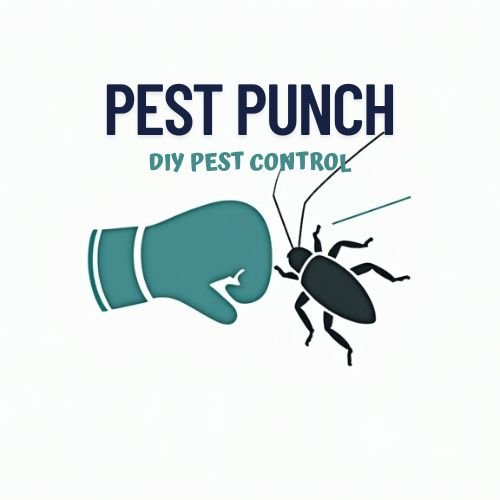

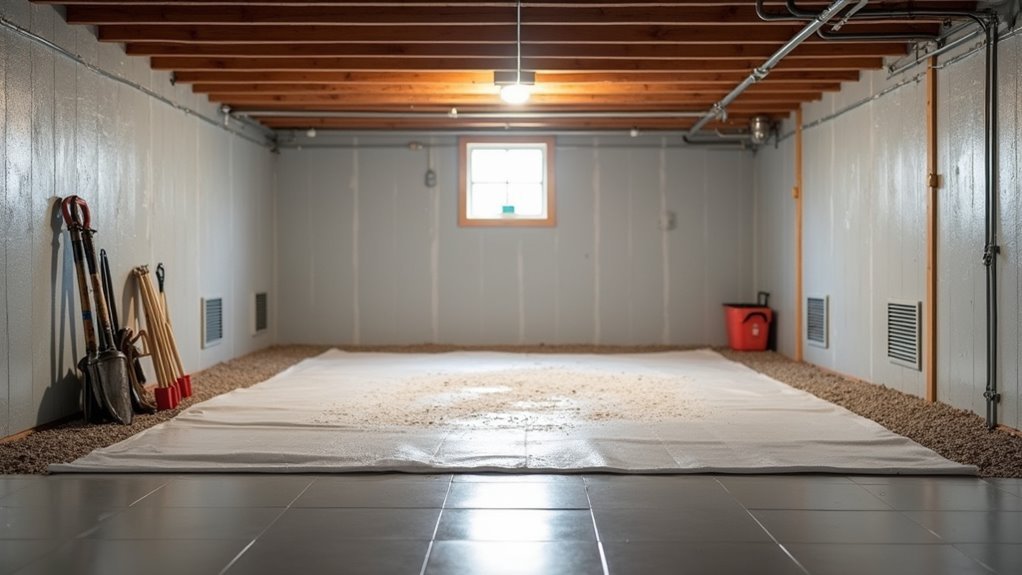
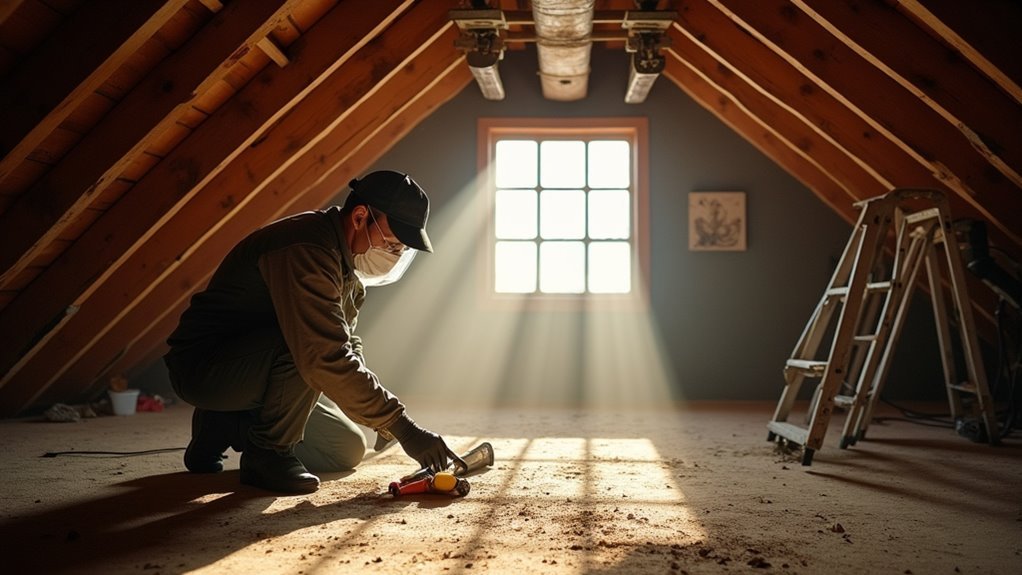
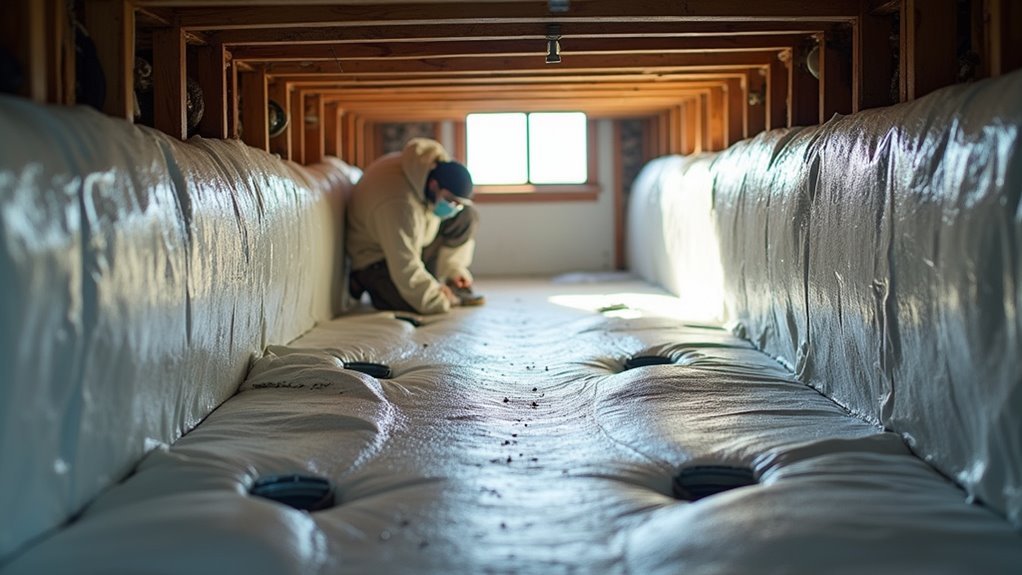
Leave a Reply